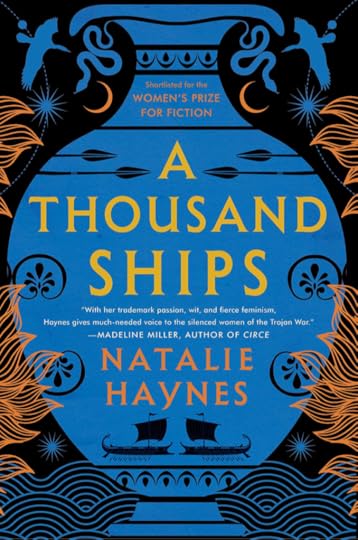Ruth Hull Chatlien's Blog, page 8
August 10, 2021
A Long Odyssey
I have a long, painful, and winding odyssey to share with you. With a happy ending.
Thirty-eight years ago, I wrote a short story about a young woman who was leaving her husband. I felt I didn’t know the characters well enough, so I decided to explore their history. The main character’s name was Katie, and she seized my heart. By the time I was done exploring, I had a manuscript that was 1,187-pages long! (I was teaching myself how to write novels. It was a necessary phase.) I cut it to 750 pages. I cut it again.
Then I tried to get an agent. And pretty consistently, I heard that they liked the writing, liked the characters, didn’t think they could sell the story.
So after sixteen years (!) of living with Katie et al, I put the manuscript away and went on to write other things.
About three years ago, I felt renewed grief over this unrealized dream, so I took out the manuscript and revised it. I sent it to a round of beta readers. Then I revised it again.
On Saturday, September 5, 2020 it went to my publisher. I fully expected that it would take a least a month to hear anything. The answer came after six days. They loved it!
Now, nearly a year later, my novel Katie, Bar the Door is about to be published. It’s coming out on September 22, 2021.

SYNOPSIS
From a childhood of parental loss, religious repression, and sexual shaming, Katie Thompson suffers deep wounds and persistent self-doubt. Her desire to find meaning through education and a career is threatened by those who push her to conform to a more traditional path. In her desperate search for love, Katie makes disastrous choices about men, leading her to the brink of self-destruction. Her journey through Katie, Bar the Door is the universal quest for healing and hope as she struggles to save herself and her dreams.
You can preorder the book here.
August 8, 2021
Sunday Review: Klara and the Sun
It’s interesting to see the world through the eyes of a robot who has to infer so much about the behavior of the human family with which she lives. I found Klara a surprisingly endearing character (more so than most of the humans). Part of her relationship with the sun is obvious, but the deeper part is mysterious and unexplained. At a broader level, I thought the novel had a lot to say about throw-away culture—how this future society (and our own) view humans and technology as disposable because it’s just too much trouble to to find useful roles for those we have “outgrown.” This is a thought provoking book but not a comfortable one.

August 1, 2021
Sunday Book Review: Women of the Chateau Lafayette
Stephanie Dray has outdone herself this time. Often when I read multiple timeline books, I have a favorite that I can’t wait to get back to, but with this novel, I was invested in all three stories. The three main characters are each compelling in very different ways. And the time periods! The French Revolution, World War I, and World War II—each full of drama and human tragedy. Highly recommended. https://smile.amazon.com/The-Women-of-Chateau-Lafayette/dp/0593335937/ref=tmm_pap_swatch_0?_encoding=UTF8&qid=1627819414&sr=8-1

July 25, 2021
Sunday Book Review: A Thousand Ships

This is a fascinating patchwork of chapters recounting the stories of the women named in the epics and myths about the war. It’s not purely chronological. Occasionally, the author flashes back to give an important back story. For instance, Iphigenia came fairly late in the story as did the story of the golden apple disputed by the three goddesses. Some of the stories are very painful, while others show resilience. I love that the women are finally getting their due. https://www.amazon.com/Thousand…/dp/1509836195/ref=nodl_
Book Review: A Thousand Ships

This is a fascinating patchwork of chapters recounting the stories of the women named in the epics and myths about the war. It’s not purely chronological. Occasionally, the author flashes back to give an important back story. For instance, Iphigenia came fairly late in the story as did the story of the golden apple disputed by the three goddesses. Some of the stories are very painful, while others show resilience. I love that the women are finally getting their due. https://www.amazon.com/Thousand…/dp/1509836195/ref=nodl_
July 18, 2021
Sunday Review: The Children’s Blizzard by Melanie Benjamin

FIVE STARS
This novel is based on true historical events that I knew about from working on history textbooks, so I was anxious to read it. Unlike her other books, Benjamin writes about mostly fictional characters in this one. The story is gripping and horrifying. Think about “To Build a Fire” on a vast scale. Honestly, this is my favorite novel of those that I’ve read by this author.
April 21, 2018
Zion: Theocracy on the Prairie
For the next few months, I will be writing about various utopian communities that I have been researching as background for my next historical novel. One of the many reasons for my interest in this topic is that I happen to live in a community that was founded as a religious utopia at the turn of the twentieth century. Zion, Illinois, was founded in 1901 by a faith healer named John Alexander Dowie.
Dowie was born in Edinburgh in 1847 to a religious family. His father worked as both a tailor and minister. In 1860, the family moved to Australia to better their economic situation. The young Dowie became interested in the spiritual aspects of healing at an early age. An experiment with his father’s pipe at the age of six made him feel so sick that he swore off the use of tobacco or alcohol. He developed digestive problems once they moved to Australia, a condition that he claimed to heal by praying and trusting in God.
When Dowie was 21, he returned to Scotland to enroll at Edinburgh University, where he studied theology and English. His father called him back to Australia before he obtained his degree, but once there, he was ordained as a minister in the Congregational Church, a denomination he served for nearly ten years. During this time, he published an anti-Catholic work called Rome’s Polluted Springs.
He became an independent minister once he began to preach divine healing, the belief that he could cure people through prayer and the laying on of hands. He was briefly involved with the Salvation Army and later got in trouble with the Melbourne, Australia, authorities for leading unauthorized processions. Fire destroyed his church under questionable circumstances, bringing the suspicion of arson down upon Dowie. He used the insurance money to pay off his debts and then moved to the United States.
He held services up and down the West Coast for a couple of years and then visited Chicago in 1890 for a convention on divine healing. A successful experience healing a woman with a fibroid tumor convinced him that God wanted him to stay there. During the Chicago World’s Fair of 1893, he rented a nearby property and held services of “Divine Healing.” Many scholars believe that the majority of the healings that took place were entirely staged, although there is some evidence that Dowie was able to relieve people of psychosomatic illnesses.
He continued his work in Chicago after the fair, gaining quite a few followers—and substantial opposition from those who thought he was a fraud. In 1896, he founded the Christian Catholic Church in Zion. (At this point, Zion was a reference to the mountain in Israel, not the later community in Illinois.)
Because of the continuing controversies about his work, Dowie secretly bought 6,000 acres of land in far northern Illinois (45 miles north of Chicago) on the shore of Lake Michigan. On that land, he founded one of the only completely planned communities in the world. The streets were laid on a grid with a circular drive surrounding the church at the center of the town. All north-south streets except two were given Biblical names. (The two non-Biblical names were chosen to honor his native Scotland.) East-west streets were numbered, starting with 1st Street on the Wisconsin-Illinois border and going south. A great deal of land was reserved for parks, a feature that continues to distinguish the city today.
The government of Zion was a theocracy, controlled by Dowie’s church, which prohibited consuming alcohol, tobacco, and pork, or practicing modern medicine. Dowie owned all the land in town and offered settlers 1,100-year leases.
The town, supposedly built as a community where believers could lead a perfect Christian life, turned out to be a giant economic fraud. Dowie’s followers were required to deposit their money in Zion Bank, which was not a legitimate financial institution but was wholly under Dowie’s control. He also sold worthless stocks in various Zion businesses. The town was continually in financial trouble, and in 1905 when Dowie traveled to Jamica for health reasons, he was deposed. The town came under the leadership of Wilbur Voliva, Dowie’s lieutenant. An investigation discovered that somewhere between two and three million dollars were missing.
Gradually, the church’s hold on the town diminished. Other churches were founded in Zion, as were new businesses. It remained a dry community for nearly a century, but in 2000, the city council passed an ordinance allowing liquor to be sold within the city limits.
Dowie’s fame, however, will live on as long as people read great literature. James Joyce was so intrigued by the man that he made him a character in his novel Ulysses.
March 18, 2018
Oneida: Perfectionism and Free Love
[image error]
For the next few months, I will be writing about various utopian communities that I have been researching as background for my next historical novel. The first one is the Oneida Community.
The founder of Oneida was John Humphrey Noyes, who lived from 1811 to 1886. In 1831, Noyes experienced a religious conversion at a revival meeting led by Charles Grandison Finney at the tail end of the Second Great Awakening, a period of religious fervor in the United States that lasted about forty years. Finney was one of the theologians of the period who believed in the doctrine of Christian perfectionism, the idea that believers could be free of sin after their conversion.
Noyes was heavily influenced by this doctrine. After his conversion, he wanted to attain sinlessness, but he was not sure how to achieve it. He began to attend seminary, first at Andover and then at Yale, but his academic studies did not provide the answer he sought. One night in 1834, after preaching a sermon whose theme was, “He that committeth sin is of the devil,” Noyes had a mystical experience as he lay awake in bed. He felt “a stream of eternal love” flow through him three times in succession, and after that, he believed that his heart was clean, his life was sinless, and that God lived within him.
Within two years following this epiphany, he had started a community of “Bible Communists” in Putney, Vermont. Members lived together, worked together, worshipped and studied together and eventually held all property in common. In his most controversial move, Noyes began to preach free love and his own unique doctrine of complex marriage. Each female adult member of the community was the wife of all the men, and each male adult member was the husband of all the women. The reason for this is that exclusive ties of monogamy were considered the source of jealousies and problems. In complex marriage, sexual relations were permissible among any consenting heterosexual partners as long as the men pulled out before orgasm to prevent pregnancy. The community practiced selective breeding, deciding as a group who would be allowed to have children together. As soon as children were able to walk, they were taken from their parents and raised by the community so they would not be corrupted by the worldly teachings under which their parents had been raised.
Needless to say, such practices were highly controversial in the mid-nineteenth century. Noyes was arrested for adultery. Jumping bail, he moved to Oneida, New York, and established a new community. There, the Oneida Community developed successful industries, including the manufacture of a particularly effective steel trap, silverware, and embroidered silks.
Despite their economic success, the community was regarded with suspicion and hostility by their neighbors because of complex marriage. In 1879, Oneida abandoned the practice at their founder’s recommendation. Noyes and a few followers moved to Canada. The remaining members also gave up their socialist institutions and reorganized their businesses as a joint stock company, which continues in operation today.
January 20, 2018
What I’ve Been Reading: In the Shadow of Lakecrest
[image error]
In the Shadow of Lakecrest by Elizabeth Blackwell is a lively story in the gothic style that I mostly enjoyed. Kate Moore meets handsome, wealthy, kind Matthew Lemont on a transatlantic crossing and is thrilled when he wants to continue their relationship after they dock in New York. On a whim, she travels with him in his private train car to Chicago, where they wed after a short courtship. This should be the answer to Kate’s prayers, who was determined to marry well to escape her violent and poverty-stricken past—a past that she is careful to hide from Matthew.
When Matthew takes Kate to his family’s estate—a crumbling hodgepodge of a mansion on Lake Michigan, cobbled together from odds and ends Matthew’s grandfather imported from Europe—Kate begins to realize that the Lemonts have their own dark secrets. What happened to the aunt, who disappeared one night after holding a strange ceremony in the labyrinth built on the grounds? And why does Matthew’s twin sister seem so jealous of Kate?
The story is a page turner that is hard to put down. I have mixed feelings about the ending though; I wish there had been more hints that the person who takes the final action of the novel had the potential to do such a thing.
January 17, 2018
What I’ve Been Reading: Wolf Winter
[image error]
WOLF WINTER by Cecilia Ekbäck is amazing. The mood is atmospheric, and the setting—far northern Sweden in 1717—is unique in my reading experience. The book is a historical thriller, but there are so many cultural, psychological, and even political layers underlying the story, that in many ways, it felt more like a literary novel.
Maija, her husband Paavo, and their two daughters have come from Finland to their uncle’s old homestead in Lapland. Almost immediately, the oldest daughter, Frederika, discovers a mutilated body high on the nearby mountain when she takes the family’s goats up to pasture. Maija and her daughter are pulled into trying to solve that crime and unearth the many dark secrets of their new community even as they fight to survive the most brutal winter in Sweden’s history. As events unfold, Frederika discovers her own supernatural gifts and must choose whether to use them.



